Chrysler 2010 Annual Report Download - page 208
Download and view the complete annual report
Please find page 208 of the 2010 Chrysler annual report below. You can navigate through the pages in the report by either clicking on the pages listed below, or by using the keyword search tool below to find specific information within the annual report.-
 1
1 -
 2
2 -
 3
3 -
 4
4 -
 5
5 -
 6
6 -
 7
7 -
 8
8 -
 9
9 -
 10
10 -
 11
11 -
 12
12 -
 13
13 -
 14
14 -
 15
15 -
 16
16 -
 17
17 -
 18
18 -
 19
19 -
 20
20 -
 21
21 -
 22
22 -
 23
23 -
 24
24 -
 25
25 -
 26
26 -
 27
27 -
 28
28 -
 29
29 -
 30
30 -
 31
31 -
 32
32 -
 33
33 -
 34
34 -
 35
35 -
 36
36 -
 37
37 -
 38
38 -
 39
39 -
 40
40 -
 41
41 -
 42
42 -
 43
43 -
 44
44 -
 45
45 -
 46
46 -
 47
47 -
 48
48 -
 49
49 -
 50
50 -
 51
51 -
 52
52 -
 53
53 -
 54
54 -
 55
55 -
 56
56 -
 57
57 -
 58
58 -
 59
59 -
 60
60 -
 61
61 -
 62
62 -
 63
63 -
 64
64 -
 65
65 -
 66
66 -
 67
67 -
 68
68 -
 69
69 -
 70
70 -
 71
71 -
 72
72 -
 73
73 -
 74
74 -
 75
75 -
 76
76 -
 77
77 -
 78
78 -
 79
79 -
 80
80 -
 81
81 -
 82
82 -
 83
83 -
 84
84 -
 85
85 -
 86
86 -
 87
87 -
 88
88 -
 89
89 -
 90
90 -
 91
91 -
 92
92 -
 93
93 -
 94
94 -
 95
95 -
 96
96 -
 97
97 -
 98
98 -
 99
99 -
 100
100 -
 101
101 -
 102
102 -
 103
103 -
 104
104 -
 105
105 -
 106
106 -
 107
107 -
 108
108 -
 109
109 -
 110
110 -
 111
111 -
 112
112 -
 113
113 -
 114
114 -
 115
115 -
 116
116 -
 117
117 -
 118
118 -
 119
119 -
 120
120 -
 121
121 -
 122
122 -
 123
123 -
 124
124 -
 125
125 -
 126
126 -
 127
127 -
 128
128 -
 129
129 -
 130
130 -
 131
131 -
 132
132 -
 133
133 -
 134
134 -
 135
135 -
 136
136 -
 137
137 -
 138
138 -
 139
139 -
 140
140 -
 141
141 -
 142
142 -
 143
143 -
 144
144 -
 145
145 -
 146
146 -
 147
147 -
 148
148 -
 149
149 -
 150
150 -
 151
151 -
 152
152 -
 153
153 -
 154
154 -
 155
155 -
 156
156 -
 157
157 -
 158
158 -
 159
159 -
 160
160 -
 161
161 -
 162
162 -
 163
163 -
 164
164 -
 165
165 -
 166
166 -
 167
167 -
 168
168 -
 169
169 -
 170
170 -
 171
171 -
 172
172 -
 173
173 -
 174
174 -
 175
175 -
 176
176 -
 177
177 -
 178
178 -
 179
179 -
 180
180 -
 181
181 -
 182
182 -
 183
183 -
 184
184 -
 185
185 -
 186
186 -
 187
187 -
 188
188 -
 189
189 -
 190
190 -
 191
191 -
 192
192 -
 193
193 -
 194
194 -
 195
195 -
 196
196 -
 197
197 -
 198
198 -
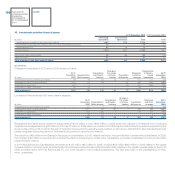 199
199 -
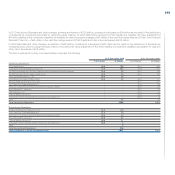 200
200 -
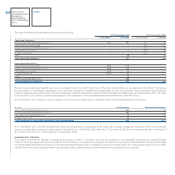 201
201 -
 202
202 -
 203
203 -
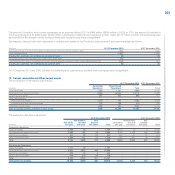 204
204 -
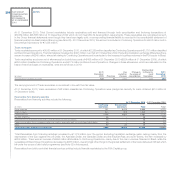 205
205 -
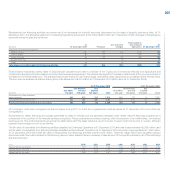 206
206 -
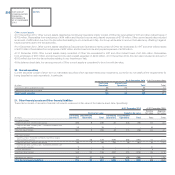 207
207 -
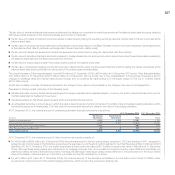 208
208 -
 209
209 -
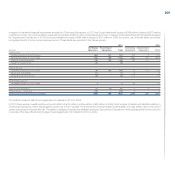 210
210 -
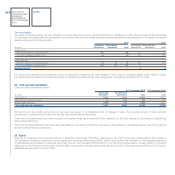 211
211 -
 212
212 -
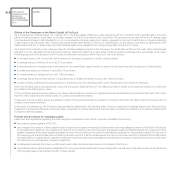 213
213 -
 214
214 -
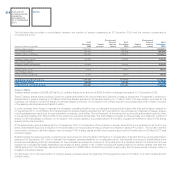 215
215 -
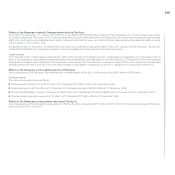 216
216 -
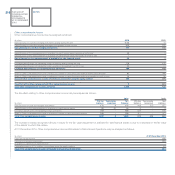 217
217 -
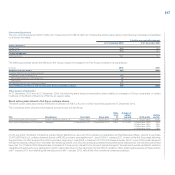 218
218 -
 219
219 -
 220
220 -
 221
221 -
 222
222 -
 223
223 -
 224
224 -
 225
225 -
 226
226 -
 227
227 -
 228
228 -
 229
229 -
 230
230 -
 231
231 -
 232
232 -
 233
233 -
 234
234 -
 235
235 -
 236
236 -
 237
237 -
 238
238 -
 239
239 -
 240
240 -
 241
241 -
 242
242 -
 243
243 -
 244
244 -
 245
245 -
 246
246 -
 247
247 -
 248
248 -
 249
249 -
 250
250 -
 251
251 -
 252
252 -
 253
253 -
 254
254 -
 255
255 -
 256
256 -
 257
257 -
 258
258 -
 259
259 -
 260
260 -
 261
261 -
 262
262 -
 263
263 -
 264
264 -
 265
265 -
 266
266 -
 267
267 -
 268
268 -
 269
269 -
 270
270 -
 271
271 -
 272
272 -
 273
273 -
 274
274 -
 275
275 -
 276
276 -
 277
277 -
 278
278 -
 279
279 -
 280
280 -
 281
281 -
 282
282 -
 283
283 -
 284
284 -
 285
285 -
 286
286 -
 287
287 -
 288
288 -
 289
289 -
 290
290 -
 291
291 -
 292
292 -
 293
293 -
 294
294 -
 295
295 -
 296
296 -
 297
297 -
 298
298 -
 299
299 -
 300
300 -
 301
301 -
 302
302 -
 303
303 -
 304
304 -
 305
305 -
 306
306 -
 307
307 -
 308
308 -
 309
309 -
 310
310 -
 311
311 -
 312
312 -
 313
313 -
 314
314 -
 315
315 -
 316
316 -
 317
317 -
 318
318 -
 319
319 -
 320
320 -
 321
321 -
 322
322 -
 323
323 -
 324
324 -
 325
325 -
 326
326 -
 327
327 -
 328
328 -
 329
329 -
 330
330 -
 331
331 -
 332
332 -
 333
333 -
 334
334 -
 335
335 -
 336
336 -
 337
337 -
 338
338 -
 339
339 -
 340
340 -
 341
341 -
 342
342 -
 343
343 -
 344
344 -
 345
345 -
 346
346 -
 347
347 -
 348
348 -
 349
349 -
 350
350 -
 351
351 -
 352
352 -
 353
353 -
 354
354 -
 355
355 -
 356
356 -
 357
357 -
 358
358 -
 359
359 -
 360
360 -
 361
361 -
 362
362 -
 363
363 -
 364
364 -
 365
365 -
 366
366 -
 367
367 -
 368
368 -
 369
369 -
 370
370 -
 371
371 -
 372
372 -
 373
373 -
 374
374 -
 375
375 -
 376
376 -
 377
377 -
 378
378 -
 379
379 -
 380
380 -
 381
381 -
 382
382 -
 383
383 -
 384
384 -
 385
385 -
 386
386 -
 387
387 -
 388
388 -
 389
389 -
 390
390 -
 391
391 -
 392
392 -
 393
393 -
 394
394 -
 395
395 -
 396
396 -
 397
397 -
 398
398 -
 399
399 -
 400
400 -
 401
401 -
 402
402
 |
 |

207
The fair value of derivative financial instruments is determined by taking into consideration market parameters at the balance sheet date and using valuation
techniques widely accepted in the financial business environment. In particular:
the fair value of forward contracts and currency swaps is determined by taking the prevailing exchange rate and interest rates in the two currencies at the
balance sheet date;
the fair value of currency options is determined using valuation techniques based on the Black-Scholes model or binomial models and market parameters
at the balance sheet date (in particular exchange rates, interest rates and volatility rates);
the fair value of interest rate swaps and forward rate agreements is determined by using the discounted cash flow method;
the fair value of derivative financial instruments acquired to hedge interest rate risk and currency risk is determined using the exchange rates prevailing at
the balance sheet date and the discounted cash flow method;
the fair value of equity swaps is determined using market prices at the balance sheet date;
the fair value of derivatives hedging commodity price risk is determined by using the discounted cash flow method, taking the market parameters at the
balance sheet date (and in particular the future price of the underlying and interest rates).
The overall increase in Other financial assets, from €636 million at 31 December 2009 to €604 million at 31 December 2010 and in Other financial liabilities
from €464 million at 31 December 2009 to €402 million at 31 December 2010 is mostly due to the reclassification to Discontinued Operations and to
changes in exchange rates and interest rates during the year, and to a positive fair value arising from the equity swaps on Fiat S.p.A. ordinary shares
(€107 million euros).
As this item consists principally of hedging instruments, the change in their value is compensated by the change in the value of the hedged item.
Derivates for trading consist principally of the following types:
derivatives (mostly currency based derivatives) acquired to hedge receivables and payables subject to currency risk and/or interest rate risk which are not
formally designated as hedges at Group level;
derivatives relating to Fiat shares (equity swaps) which are described further below;
an embedded derivative in a bond issue in which the yield is determined as a function of trends in the inflation rate and related hedging derivative, which
converts the exposure to floating rate. The total value of the embedded derivative is offset by the value of the hedging derivative.
At 31 December 2010, the notional amount of outstanding derivative financial instruments is as follows:
At 31 December 2010 At 31 December 2009
Continuing Discontinued
(€ million) Operations Operations Total Total
Currency risk management 8,183 4,378 12,561 9,189
Interest rate risk management 9,407 3,133 12,540 13,368
Interest rate and currency risk management 1,005 - 1,005 933
Other derivative financial instruments 230 2 232 244
Total notional amount 18,825 7,513 26,338 23,734
At 31 December 2010, the notional amount of Other derivative instruments consists of:
For €204 million (€204 million at 31 December 2009) the notional amount of the two equity swaps, renewed in 2010 and expiring in 2011, arranged to
hedge the risk of an increase in the Fiat share price above the exercise price of the stock options granted to the Chief Executive Officer in 2004 and 2006
(see Note 23). At 31 December 2010, the equity swaps have a total positive fair value of €115 million (a positive fair value of €8 million at 31 December
2009). Although these equity swaps were entered into for hedging purposes, they do not qualify for hedge accounting under IFRS and accordingly are
defined as trading derivative financial instruments. Following the Demerger these equity swaps make reference to the performance of the stock market
value of the basket of shares made up of the Fiat S.p.A. share and the Fiat Industrial S.p.A. share.
For €14 million (€14 million at 31 December 2009), the notional amount of the derivative embedded in a bond with a return linked to inflation rates,
as well as the notional amount of the related hedging derivative, which converts the exposure to floating rate.
